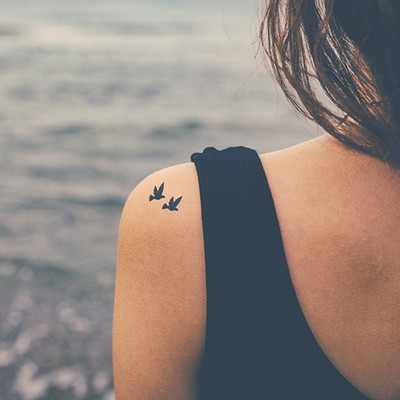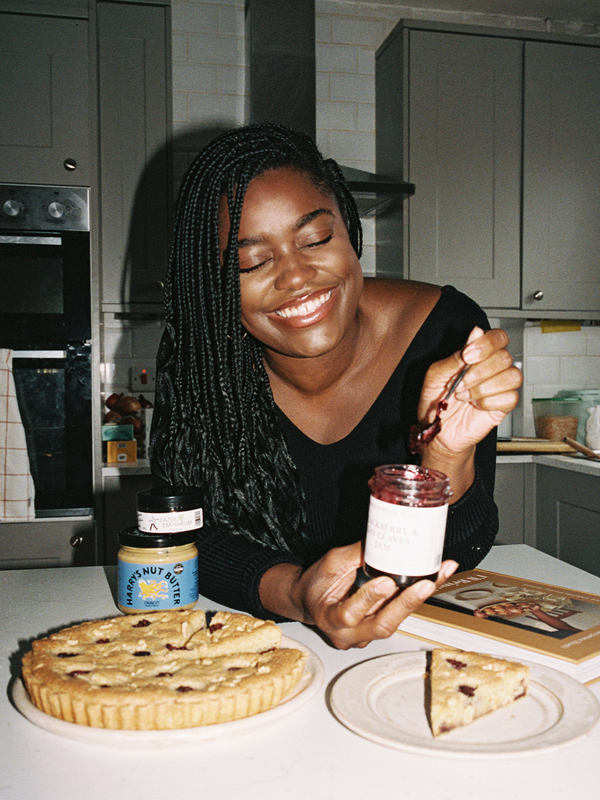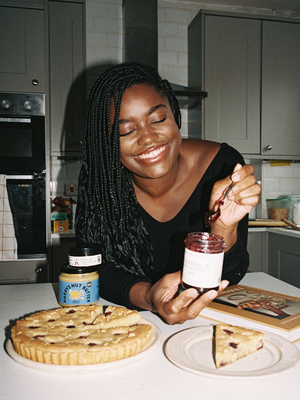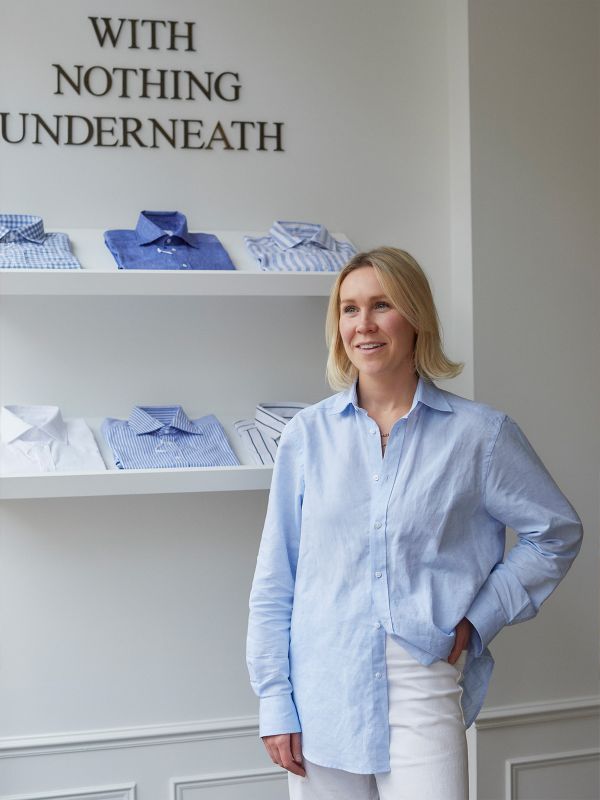
What To Know Before Getting Your First Tattoo
1. Whether You Really Want One
While statistics seem to suggest having tattoos doesn’t affect your employment prospects, you shouldn’t believe everything you read in the news. One smaller-scale study found women with tattoos were offered a lower starting pay than those without, as they were seen as “less competent and committed”. It’s an unfair bias UK employment law specialists ACAS has picked up on, too – the organisation found that people with visible tattoos often appeared to be stereotyped by their managers who made assumptions about their employees’ characters based on their appearances, especially if they worked at more traditional firms.
It goes without saying that if you’re umming and ahhing over an inking, it’s worth waiting until you’re 100% sure to make the decision – especially if you’re the type of person who tends to change their taste and aesthetic often. Tattoo removal is painful, expensive and in a lot of cases, particularly with coloured tattoos, doesn’t completely remove the design.
Do also keep in mind the health implications of getting tattooed. As I discovered myself, there’s no such thing as a completely safe inking: evidence is mounting up to suggest they can lead to chronic inflammatory skin conditions in certain individuals.
2. What You Want
As obvious as it sounds, try not to be influenced by your peers or celebrities – getting the ‘design of the moment’, despite it not being your usual style, will mean you’re more likely to regret the decision later.
Instead, choose something that resonates with you: tattoos don’t all have to have a hidden meaning, but picking a design you genuinely love is a must. And it’s important to feel as though the style suits you, too – there are certain styles of tattoos I love the look of on others, but know aren’t right for me.
When picking a style, and opting whether to go for black or colour work, consider how it will it fit in with your everyday wardrobe. And when it comes to size, starting small is advised – giving yourself a chance to learn the process, how your skin takes it and how your body heals – but don’t feel you have to; you may end up wishing you’d got the bigger size you’d originally wanted it later on.
3. And Where You Want It
The most important question to ask yourself is whether you want your tattoo to be visible to the outside world or not. While wrist tattoos are incredibly popular, as a rule of thumb most tattoo artists won’t tattoo other very visible areas such as the hands, neck or face, on very young people or those without any other visible tattoos.
And before you ask: yes, it’s going to hurt. Certain areas of the body are more painful than others, but you shouldn’t let that influence your decision if you really want a design in a certain spot. The most painful areas tend to include those directly over bone, including the neck, spine, ribs, ankles, feet, hands and head. Flatter surfaces and anywhere the skin feels ‘hard’ such as the biceps and thighs are less painful (meaning the softer inner sides will feel more sensitive).
It’s also worth noting the inside of the fingers, the palms of the hands and soles of the feet are also notoriously tricky areas to tattoo, as the skin on these areas is different and doesn’t hold the ink as crisply, meaning it will spread or ‘blow out’ under the skin.
4. How The Booking & Design Process Works
Finding a tattoo artist who specialises in the style you want is key – if you’re not going by recommendation, the easiest way to do this is by visiting a tattoo parlour’s website and checking out each of their artists’ work, along with browsing their Instagram pages.
Most reputable shops will ask you to book the appointment in person, or at least chat over the phone and pay a deposit before the day of your tattoo – and unless you’re getting a super simple design (think, an outline of a star), it’s well worth booking in for a consultation a couple of weeks before.
Many of the most in-demand artists are booked for months in advance so you may need to join a waiting list, but once you’ve made it to the initial appointment, make sure you take a few images along to give them an idea of what you want. Your artist will then be able to create something unique for you, using your ideas as a guideline (keep in mind it’s a major no-no to ask a tattoo artist to recreate someone else’s bespoke design exactly). They can also advise on placement.
If you’re not completely happy with the design on the day of the tattoo, speak up. It’s always better to let your artist know so they can tweak a few details even if it means you may need a second appointment for a larger piece, rather than ending up with a design you don’t love.
5. Handling The Pain
The most accurate description of what being tattooed feels like is an “electric cat scratch”: tingly and scratchy at the same time. If you’re getting a large or very detailed piece, you might also feel stinging, burning (which is caused by the needle going over the same spot multiple times) and, eventually, dullness or temporary numbness.
Everyone’s pain threshold is different, and how heavy-handed your tattoo artist is can also have an effect. If you are in pain, remember to breathe, and don’t hold your breath during particularly painful spots – try to relax and find something to distract you, such as reading a book, listening to music, catching up on podcasts or watching your favourite Netflix series (with headphones, of course).
If you’re really nervous, most tattoo shops will let you bring a friend to your appointment to hold your hand, but it’s always polite to call and check first to ensure the space won’t be too crowded.
6. What To Do Before Your Appointment
The evening before your appointment, avoid alcohol as it can thin your blood, and get a good night’s sleep. You may want to skip a heavy session at the gym if you tend to get sore muscles, as you may have to sit or lay in an awkward position whilst being tattooed. Then, ahead of being tattooed, have something to eat and make sure you’re hydrated – it’s also fine to bring along water, sugary drinks and emergency snacks should you feel faint during the session.
Depending upon where the tattoo will be, you’ll want to wear clothes that will allow easy access to that part of your body; getting a leg tattoo wearing skinny jeans means you’ll have to strip off. Loose-fitting clothes are always a good option as it will lessen the chance of the fabric irritating your fresh inking. The only exception is if you’re getting your feet tattooed – wearing a pair of lace-up plimsolls (like Converse or Vans) can help stop the swelling by applying gentle pressure.
It also goes without saying that if you have a medical condition, it’s also wise to talk to your doctor before getting tattooed for the first time.
7. And What To Do After
Every tattoo artist has their own preferred method of aftercare, so always follow the instructions given to you. Generally, ‘dry healing’ is favoured over ‘wet healing’ these days – this means removing the bandage as soon as you get home (rather than leaving it on for hours), washing the tattoo with a mild soap (Dr Bronners is great), and only applying ointment or unscented lotion in a thin layer when the tattoo looks dry or starts to peel.
There’s a list of universal don’ts: don’t expose it to direct sunlight or go swimming for two weeks (meaning it’s best not to get tattooed before jetting off on a pool-side holiday); no baths for two weeks (showers are fine); don’t re-bandage it; don’t pick it or scratch it; and don’t let it come into contact with anything dirty.
If the tattoo needs touching up after the healing process, get in touch with your artist and arrange a follow-up appointment – this is usually covered in the cost of the tattoo.
DISCLAIMER: We endeavour to always credit the correct original source of every image we use. If you think a credit may be incorrect, please contact us at info@sheerluxe.com.







